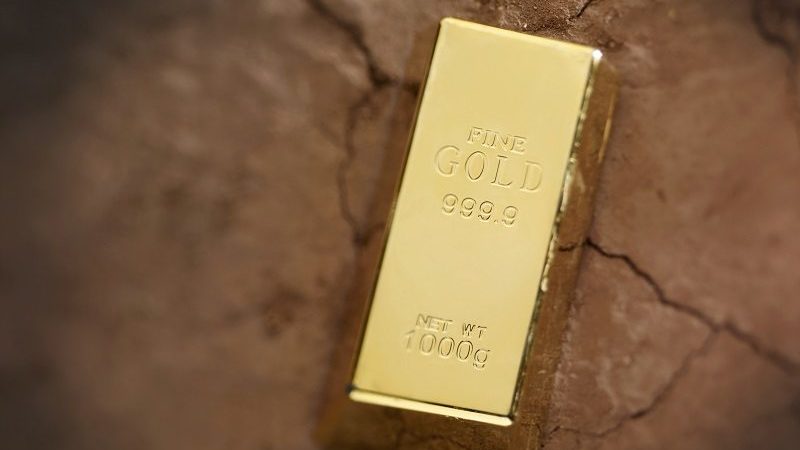Gold has a reputation for providing a good hedge against inflation. This might explain the recent rise in the gold price – up around 12% since mid-March. However, data from the Gold Council suggests this reputation may be ill-deserved. Certainly, there appear to be conflicting views on whether gold can truly be a weapon in an investor’s anti-inflation armoury.
Gold slid 16% from its historic highs in August 2020, as ETF selling pushed prices lower. It appeared to bottom out in March 2021 and has subsequently resumed its trajectory higher. There are a number of elements at work, including long-term gold buying by central banks and consumers in India and China, but the prevailing view of gold as an inflation hedge at a time when inflationary pressures are rising appears to have been a key swing factor. This makes intuitive sense. At a time when money is abundant, leading to the devaluing of fiat currencies, gold has scarcity value.
However, research from the World Gold Council suggests this relationship is imperfect at best. It says: “Since 1971, only 16% of the variation in gold prices can be explained by changes in CPI inflation. While a period from the 1970s to the early 1980s experienced both strong gold returns and extremely high inflation, this has not been repeated since, partly because inflation has been much lower and partly because the relationship between gold and the CPI has been weaker.
“In fact, since the early 1980s the only sustained period of ‘uncomfortably’ high CPI inflation (+4%) amid good gold returns ran from Q4 ’07 to Q2 ’08 during the depth of the Global Financial Crisis …Although gold returns were good, inflation or inflation expectations appeared not to be prominent drivers.” Ultimately, it concludes that gold can play a role in protecting a portfolio against inflation, but it is a ‘blunt tool’.
Perception rather than reality
George Lagarias, chief economist at Mazars agrees: “Gold is more widely perceived as an inflation hedge rather than being one. In quiet inflationary periods gold tends to follow other fundamentals, such as central bank and consumer demand. Its historical patterns were unequivocally affected after the introduction of Gold ETFs in 2005. In fact, historic correlations from 1971 suggest a very small positive correlation (13%) between returns of gold and changes in US inflation.
That said, Lagarias adds that correlations between gold and inflation tend to increase sharply in more acute inflationary episodes, like in 1981 and 2011, and 2021 may qualify as just such an episode: “Numbers suggest the highest inflation figures in a decade.”
But before investors rush to gold for protection, there is a caveat: “Investors should be mindful, that while correlation increases during the acute phase, it tends to decrease dramatically as inflation decelerates. Currently, central banks are not discounting a long-term bout of inflation. By historical standards this could mean de-correlation soon,” he adds.
Pulled in different directions
The problem, says Gavin Haynes, investment consultant at Fairview Investing, is that there are multiple factors pulling gold in different directions: “In reality, gold acts like a currency. If real interest rates remain negative, then gold has some appeal. However, if inflation leads to rising rates, the opportunity cost of holding gold rises because it doesn’t have an income.”
It will also appreciate if the major currencies are depreciating in value, being seen as a store of value. “Recently, the volatility in cryptocurrencies has influenced the gold market. Crypto had been seen as a gold alternative, but recent volatility has spooked investors and pushed people back into gold,” says Haynes.
Lagarias believes that instead of trying to time an extremely complex and low visibility market, investors should consider gold as part of a wider long-term portfolio, and if anything, a more effective hedge against the proliferation of monetary accommodation.
Gold price or through miners?
This makes the decision of whether to invest directly in the gold price or through gold mining shares more difficult. While the share price performance of gold mining companies correlates with the gold price, there are other factors at work – wage costs, the strength of the management team, the cost of extraction, dividends and cash flow. Gold managers tend to offer a leveraged play on the gold price.
Haynes says: “Some active managers are certainly arguing that gold miners are attractive today, but investors must take on the vagaries of the equity market. They can be a geared play on the gold price, but you need to know the direction of travel.”
In general, the gold miners appear to have outpaced the gold price over recent months, though it depends on the benchmark. It is an imperfect comparison, but the L&G Gold Mining Ucits ETF is up 7.8% over one year, while the ETFS Physical Gold ETF is up 0.4%. Alasdair McKinnon, manager of the Scottish Investment Trust has around 20% of the portfolio in gold miners, saying they look good on a standalone basis and he believes that gold should continue to rise. Investors shouldn’t be deterred by recent strong performance – there is room to run after a difficult decade.
The Ruffer investment trust has been raising its position in gold, adding to bullion and selected gold mining equities in March and April. However, this is not in response to inflation – the managers had actually reduced gold exposure last summer in anticipation of a reflationary shift in markets ahead of the vaccine announcements in November. Their view is that gold hedges against deflation and the possibility of dollar weakness.
With gold, the forces driving the price are multi-faceted and can be in conflict. It is difficult to time the market with any degree of accuracy as a result. However, that’s not to say that gold doesn’t have a role in a portfolio. It continues to provide protection against a range of plausible scenarios that could emerge over the next few months.










